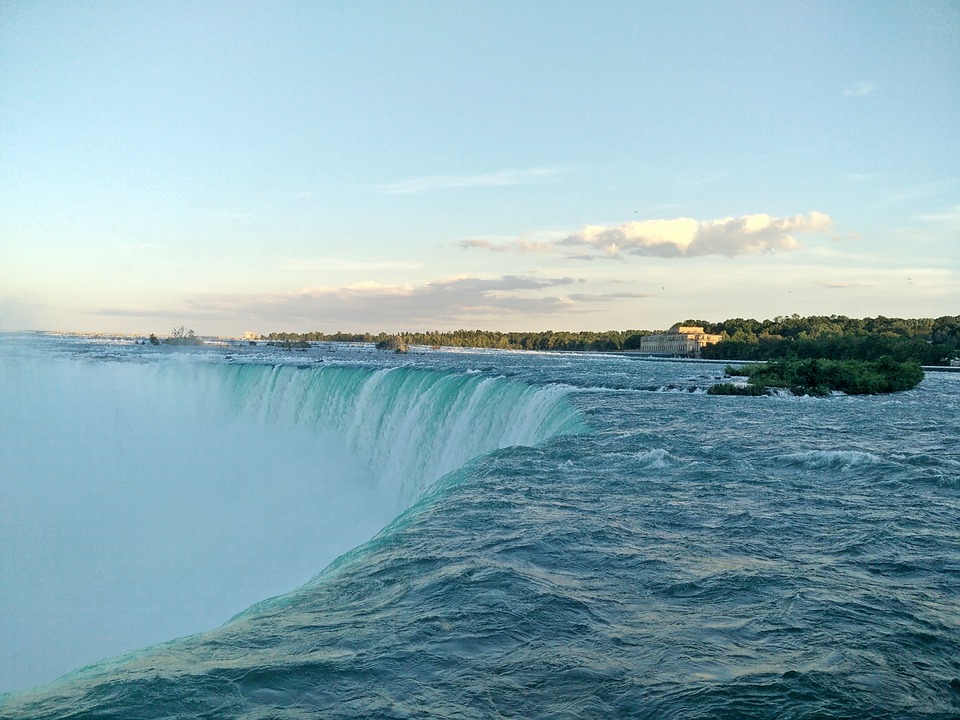Damaging Waters Lead to Uncertain Future for Library

Niagara Falls, New York was in a terrific financial bonanza in the early 20th century. Available land and cheap power attracted many chemical and manufacturing companies. From 1900 to 1960 the city’s population grew from 20,000 to more than 100,000. With a larger population came a need for more public services, including a new library. Enter Paul Rudolph. “Rudolph was picked unanimously by the city’s architectural selection committee in November 1968 from a field of five finalists. His career was in full stride, and he had a well-established reputation for complex, monumental designs fueled by his individualistic zeal.[1]” Rudolph was a sought after architect who was known for his Brutalist architecture. Brutalism is a movement popular from the 1950s to the mid 1970s, characterized by buildings that are typically massive in structure with a propensity for exposed concrete composition.
“Rudolph relies on angles to create visual depth and variety while instilling a constant sense of drama and tension throughout the exterior. Inside, natural light floods down from its clerestories onto an open, three-floor plan, creating an atmosphere that’s as serious as it is calming.[2]” The four story building has public use on the floors one and two, including a reading room, a children’s library, and meetings rooms. Local archives are found on the third floor, and the fourth floor houses mechanical equipment.
What started as a beautiful architectural dream, eventually turned into a major headache. The cause was water. Water leaks were exposed early on before the building was even finished and then moisture appeared on the library’s walls and ceiling once the building was completed. Leaks were reported whenever it rained. The contractor, Albert Elia Company, blamed the architect. Rudolph blamed the contractor.
By 1978, there still was no resolution about accountability and the leaking continued to damage the building. The library remained open during all of this, however one of the third floor tenants moved out due to the relentless water leaks. An independent consultant anticipated that the damage had already taken ten years off the lifespan of the building and the estimated cost to repair was $2.5 million. Among the issues reported were:
- It had a roof drainage system too small for the building and in violation of the New York State Plumbing Code.
- Roof flashing was designed and installed so low against adjacent walls that it allowed water to overflow it and run into the interior of the building.
- Exterior wall coping was designed without any method of preventing water from entering beneath it.
- Exterior building block was so porous it readily absorbs large quantities of water
- Through-wall flashing plans lacked sufficient detail to permit the building’s general contractor, the Albert Elia Building Co., to install it properly.
- Copies of letters contained in the report indicated Elia requested, during construction, that the flashing be raised six to eight inches in order to avoid the possibility of an overflow, but Rudolph rejected the request ‘due to aesthetics.’ [3]
The library was finally leak free and fully restored in 1982 after the city successfully sued both Elia and Rudolph the year before for a total of $2.22 million.
A more recent survey of the building in 2011 determined the building in need of another $2.1 million in repairs due to issues such as sinking floors. However, the outlook is dim for these repairs. Niagara Falls has endured a decline in population and economic deterioration. It’s population is now around 55,000 [4] and about 60 percent of residents receive public assistance[5]. These reasons combined with the massive Brutalist design no longer being en vogue make this once architectural beacon an unlikely candidate for conservation and endurance.
References
- Byrnes, Mark. “The Weird and Wonderful Library That Nearly Ruined its Architect.” The Atlantic Citylab, 2016.
- Ibid.
- Ibid.
- https://en.wikipedia.org/wiki/Niagara_Falls,_New_York
- Ibid.
Tags: Brutalist, library architecture, library repairs, Niagara Falls, Water Damage







